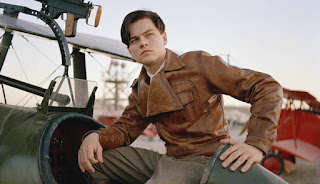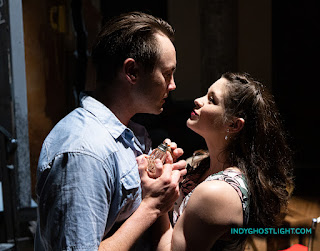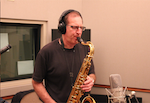Fraternal twins: Beethoven's fourth and fifth symphonies bring the first chapter of ISO's 'BTHVN2020' to a close
So, here we have it: the classical-music icon, the work that could be identified by the packed-together name "Beethoven'sFifth," the musical objective correlative of triumph, and our grandparents' indelible notion of a Victory Symphony, because its generating motif of three short notes and one long one corresponds to the Morse code for "V."
During World War II, that famous beginning was officially Allied propaganda. But it was already well-known, and has thus come to symbolize classical music to many people in blissful ignorance of all that the term embraces. It probably still tops "O Fortuna!" from "Carmina Burana" and "Nessun dorma" from "Turandot" in terms of mass familiarity. Yet it's a remote monument to many who are otherwise wholly at the mercy of pop culture.
Once, as a young teacher, I exposed my high-school English class to the opening of Stravinsky's "L'histoire du Soldat," with recorded narration, hoping to drive home a lesson about being tempted by the Prince of Darkness. The object of study may have been "The Devil and Daniel Webster," but I've forgotten, and it doesn't matter.
One rough-hewn lad sneered audibly as the first phrases of the small-scale theater piece wafted into the classroom: "What is this — Beethoven's Fifth?" The two works have nothing in common, but the student's impulsive plastering a Beethoven's Fifth bumper sticker on Stravinsky was sufficient to stigmatize it as having stature, perhaps, but irredeemably alien.
If the bulk of the populace is unfamiliar with anything beyond the world-famous motif and snatches of the first movement that ensues, exposure to the full Symphony No. 5 in C minor, op. 67, is necessary to absorb the impact of victory in the abstract, rendered in musical specifics by the spooky transition to the finale and its sudden outburst in a stalwart C major. T.S. Eliot coined the phrase "objective correlative" to designate "a situation, a chain of events which shall be the formula of [a] particular [emotion]" in literary art. Nothing fulfills that role better for the emotion of triumph in music than Beethoven's Fifth.
Part of the effect comes from the addition of three trombones to the orchestra in a symphonic first as the last movement begins. In the performance the Indianapolis Symphony Orchestra gave Friday night, we had already heard the thrilling effect of "natural" horns and trumpets in the prior movements. With trombones lending a heraldic note to the full ensemble (with the sonic spectrum widened further by the addition of piccolo and contrabassoon), we inevitably get the "ah-ha! we have arrived!" feeling. And that was fully present in Friday's performance.
I once made a whimsical analogy to this stunning onset of the finale after I saw the film "The Aviator" in the movie theater. To underline the triumph of Howard Hughes' "Spruce Goose," an experimental aircraft that went aloft on top of a host of failures, the soundtrack took on, with the plane's roaring takeoff, a new dimension as speakers all around magnified the sound that had come from up front only. The effect was transcendent. "Just like the finale of Beethoven 5!" I exclaimed to my bemused elder son.
Apart from a discordant blast when the horns began their fortissimo fanfare, the performance jelled agreeably. I enjoyed the unhurried pace Urbanski allowed for the oboe cadenza (famous in part for Peter Schickele's sports-commentary parody shouting in amazement at the player's seeming to wander off the field). In the second movement, signs of Urbanski's interest in parallelism (a la Toscanini) more than stacking sonorities came through expertly. The scherzo had just the right blend of "bite" and cautious feeling its way forward.
The concert opened with the first of two commissioned pieces, Huw Watkins' "Dawning," a ruddy-cheeked miniature saluting the sunny mood of the Beethoven symphony it was meant to be a companion to: Symphony No. 4 in B-flat major. Bright woodwind answers to string phrases in the opening movement were especially attractive in Friday's performance. There was a smoothness throughout and rewarding efforts to impart a glow to the score. In the finale, a consistently powerful motoric drive provided contrast, foreshadowing the overall impact of the iconic Fifth that followed intermission.
The companion piece to that symphony was Katherine Balch's "impromptu," a wholly stimulating exercise in well-linked fragments, sometimes coalescing in recognizable suggestions of the C minor symphony's first movement harmonies. I don't care for the fashionable practice of lower-casing composition titles; other than that, Balch's response to her commission was properly arresting and worth hearing again. I hope that opportunity presents itself to audiences beyond this weekend's — though their reward is already great with the featured celebration of Beethoven's 250th, which will continue later this season.
During World War II, that famous beginning was officially Allied propaganda. But it was already well-known, and has thus come to symbolize classical music to many people in blissful ignorance of all that the term embraces. It probably still tops "O Fortuna!" from "Carmina Burana" and "Nessun dorma" from "Turandot" in terms of mass familiarity. Yet it's a remote monument to many who are otherwise wholly at the mercy of pop culture.
Once, as a young teacher, I exposed my high-school English class to the opening of Stravinsky's "L'histoire du Soldat," with recorded narration, hoping to drive home a lesson about being tempted by the Prince of Darkness. The object of study may have been "The Devil and Daniel Webster," but I've forgotten, and it doesn't matter.
One rough-hewn lad sneered audibly as the first phrases of the small-scale theater piece wafted into the classroom: "What is this — Beethoven's Fifth?" The two works have nothing in common, but the student's impulsive plastering a Beethoven's Fifth bumper sticker on Stravinsky was sufficient to stigmatize it as having stature, perhaps, but irredeemably alien.
If the bulk of the populace is unfamiliar with anything beyond the world-famous motif and snatches of the first movement that ensues, exposure to the full Symphony No. 5 in C minor, op. 67, is necessary to absorb the impact of victory in the abstract, rendered in musical specifics by the spooky transition to the finale and its sudden outburst in a stalwart C major. T.S. Eliot coined the phrase "objective correlative" to designate "a situation, a chain of events which shall be the formula of [a] particular [emotion]" in literary art. Nothing fulfills that role better for the emotion of triumph in music than Beethoven's Fifth.
 |
| Leonardo Di Caprio as Howard Hughes in "The Aviator" |
I once made a whimsical analogy to this stunning onset of the finale after I saw the film "The Aviator" in the movie theater. To underline the triumph of Howard Hughes' "Spruce Goose," an experimental aircraft that went aloft on top of a host of failures, the soundtrack took on, with the plane's roaring takeoff, a new dimension as speakers all around magnified the sound that had come from up front only. The effect was transcendent. "Just like the finale of Beethoven 5!" I exclaimed to my bemused elder son.
 |
| Katharine Balch's "impromptu" would be worth hearing again. |
The concert opened with the first of two commissioned pieces, Huw Watkins' "Dawning," a ruddy-cheeked miniature saluting the sunny mood of the Beethoven symphony it was meant to be a companion to: Symphony No. 4 in B-flat major. Bright woodwind answers to string phrases in the opening movement were especially attractive in Friday's performance. There was a smoothness throughout and rewarding efforts to impart a glow to the score. In the finale, a consistently powerful motoric drive provided contrast, foreshadowing the overall impact of the iconic Fifth that followed intermission.
The companion piece to that symphony was Katherine Balch's "impromptu," a wholly stimulating exercise in well-linked fragments, sometimes coalescing in recognizable suggestions of the C minor symphony's first movement harmonies. I don't care for the fashionable practice of lower-casing composition titles; other than that, Balch's response to her commission was properly arresting and worth hearing again. I hope that opportunity presents itself to audiences beyond this weekend's — though their reward is already great with the featured celebration of Beethoven's 250th, which will continue later this season.



Comments
Post a Comment